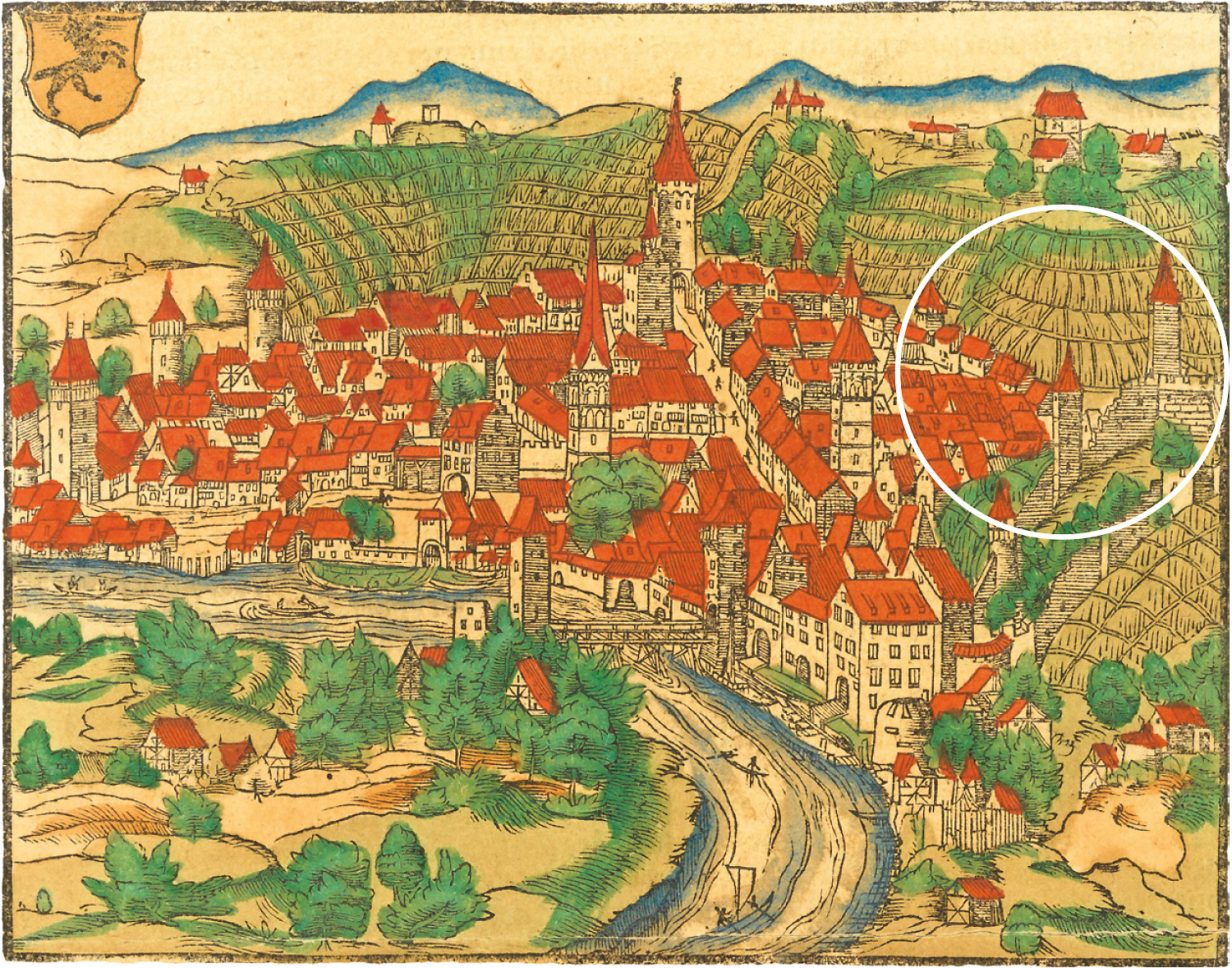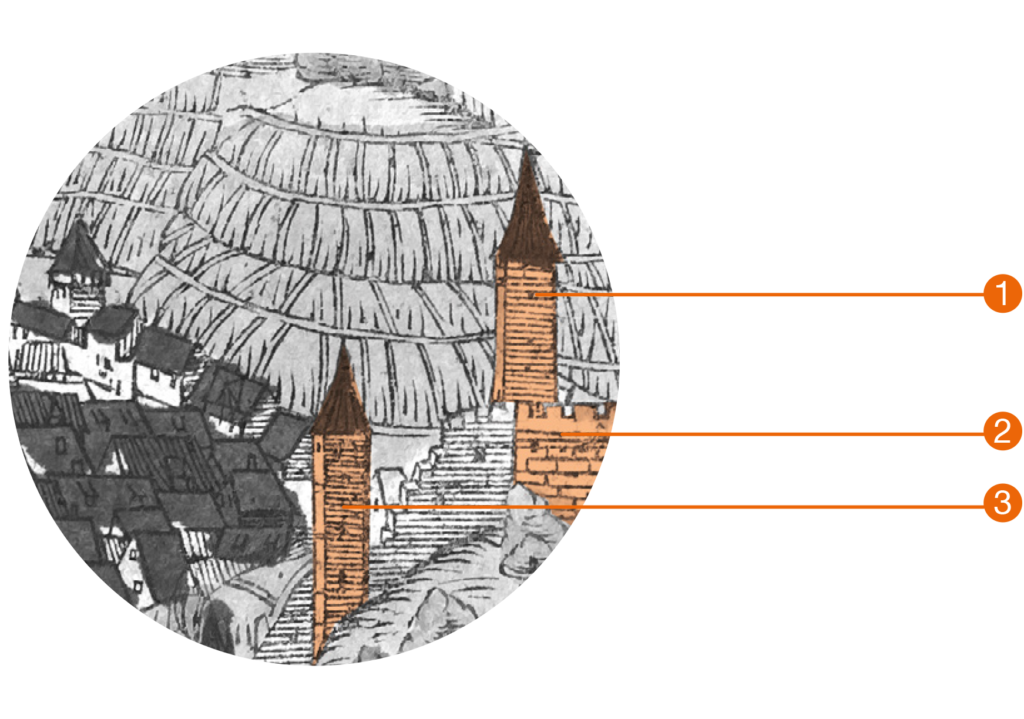From Annot to Munot
On the back of the Emmersberg
A fortress stood here on top of the Emmersberg as early as the 14 th century. Old depictions show an imposing tower called the Annot (“without distress”) with a defensive platform in front called the Zwingolf, which protected the tower since the 15 th century. Both were demolished after 1564 when the Munot was built.
Two flanking walls, which had served to anchor the Annot into the city wall enclosure, were retained and reused as part of the Munot complex.
Another element that belonged to the earlier Annot was the Römerturm [Roman tower] which was situated halfway down the slope towards the River Rhine. Its tall and slender shape was typical of medieval watchtowers and helps us to imagine what the larger Annot complex would have looked like.
a | outer ward, b | west flanking wall, c | Munot tower, d | Munot platform (battlements), e | east flanking wall

Bild: Museum zu Allerheiligen Schaffhausen (Foto: Jürg Fausch), Inv. C4618
View of Schaffhausen in the ‘Stumpf’ Chronicle (circa 1548) showing the compound that predated today’s Munot: the Annot (1), the Zwingolf (2) and further downhill the Römerturm (3) which still survives today.

1 | the Annot, 2 | Zwingolf, 3 | Römerturm